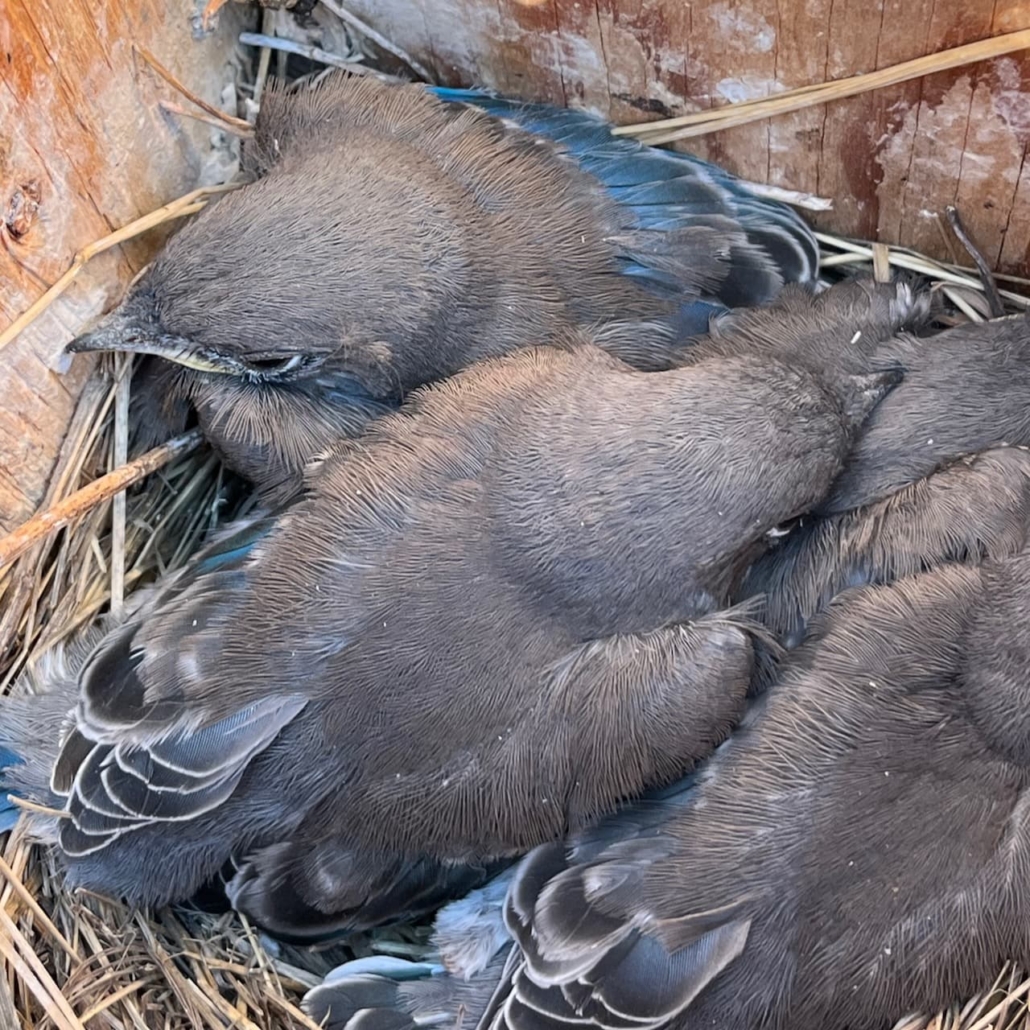2023
Our trail experienced some highs and some devastating lows in 2023.
Due to very inclement weather at exactly the wrong time our Tree Swallows took a big hit. Cold, wet weather early in the breeding season caused many young Tree Swallows to die (37). Another 66 Tree Swallow eggs failed to hatch.
A very unusual occurrence then happened as 4 Tree Swallow couples re-nested and successfully fledged 16 young. This is very rare in this species!
The good news is that the weather did not affect nesting success of Mountain Bluebirds. In fact our numbers for Mountain Bluebirds increased dramatically! Our boxes fledged 52 young compared to 32 last year. We were able to band 58 young (6 died) compared to only 40 last year.
Our trail successfully fledged our first Black-capped Chickadee nest this year, along with 3 families of House Wrens.
Ron Reist
Volunteer Trail Monitor
2022
This trail experienced some growth, however not the bounce-back year I was hoping for.
Tree Swallows did well, fledging 104 young compared to 73 in 2021. Mountain Bluebirds held their own, fledging 37 young compared to 34 in 2021. Still very impressive for a young trail (3 years).
Growth in my personal Mountain Bluebird Trail was about 50% for 2021. (I banded 800 young.) It’s 20 years old so it shows the possibilities Legacy’s trail can achieve.
Banding statistics: 53 birds were banded in 2022, compared to 45 in 2021. Empty boxes remained about the same (26 in 2022, 27 in 2021).
Still a very enjoyable year. I spotted a ‘lifer bird’ on the trail this year—a Bobolink—the first time I’ve seen one. Wow!
Ron Reist
Volunteer Trail Monitor
2021
The trail had significant declines in breeding success for both Mountain Bluebirds and Tree Swallows this year.
This poor turnout was typical across North America in 2021. Friends in Colorado and Nebraska reported drastic declines. The Christmas Bird Count in the Oklahoma panhandle reported sightings of only 60 Mountain Bluebirds this year compared to 4000 last year. Large trails in Nebraska report more than a 50% decline in Mountain Bluebird occupancy rates.
Many theories have been suggested, two appear to make sense. Icy weather last winter in Oklahoma and Texas may have resulted in an abnormal winter-kill of our birds. Many birders also noticed a huge reduction in insect load this year and last year resulting in lower nesting success.
Years like this give us the perfect reason to do what we do. This is really when the species need our help to survive.
Hopefully the coming winter will be kinder to these birds.
Ron Reist
Volunteer Trail Monitor

